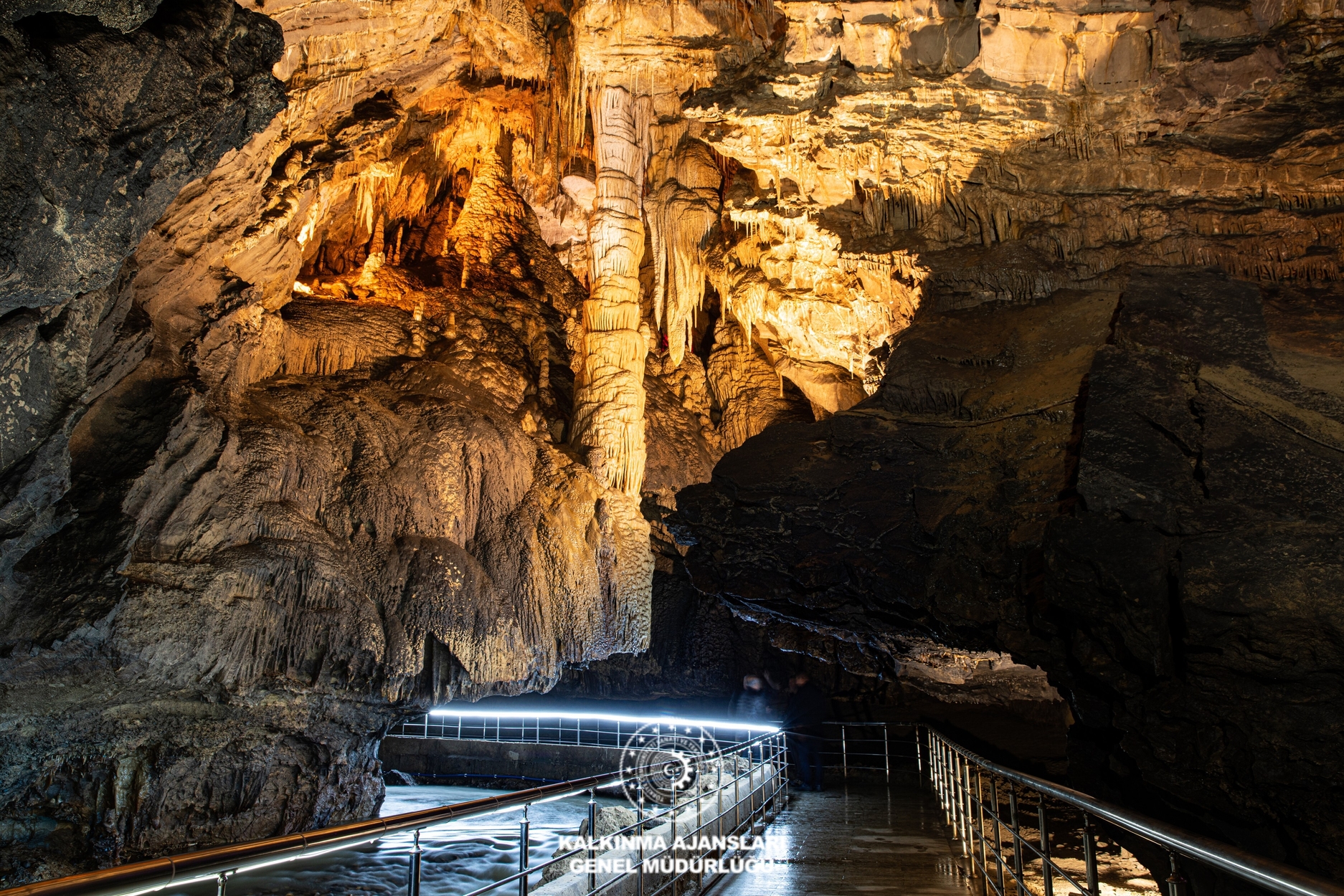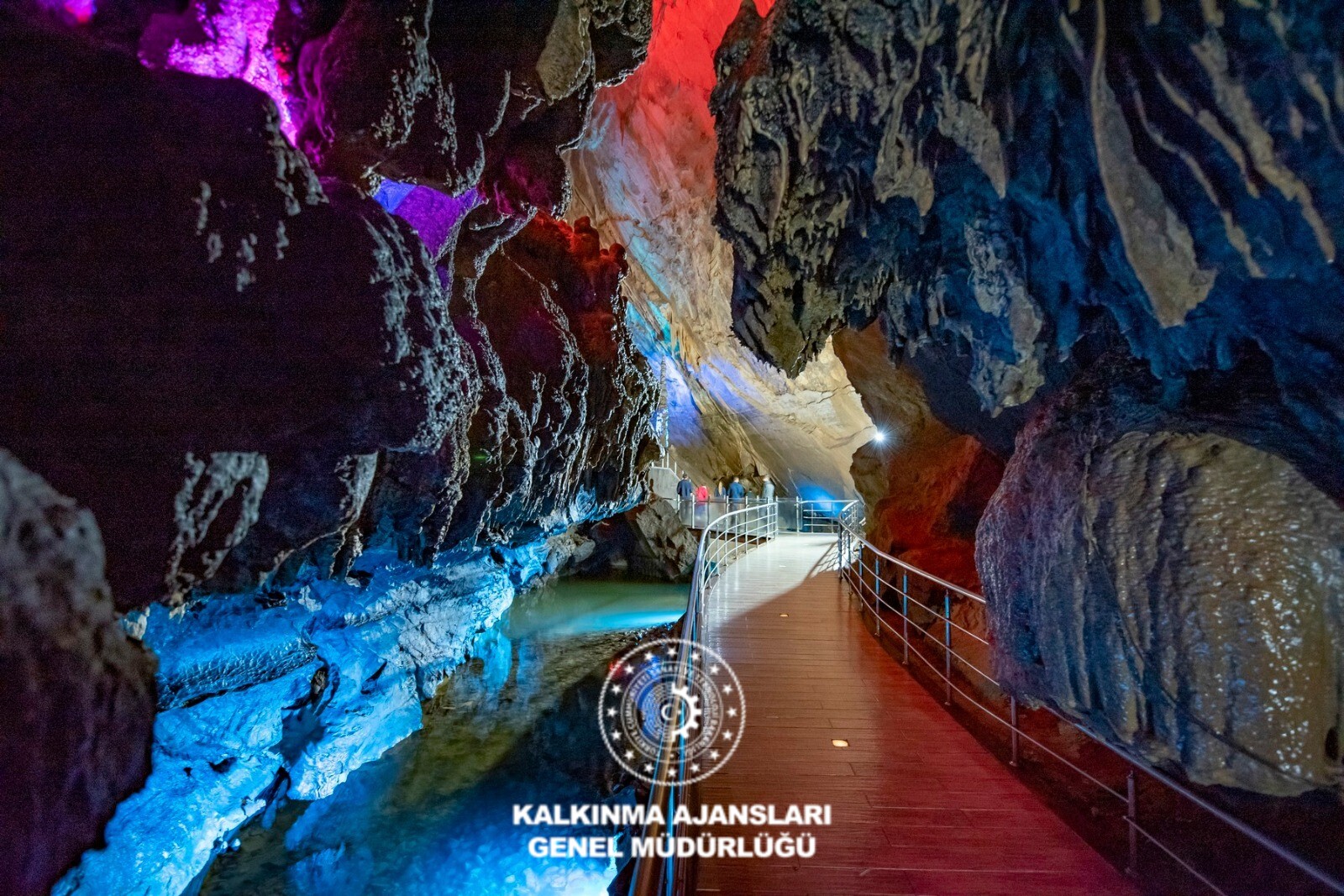Gökgöl Cave, located in the Zonguldak province of Turkey, is a cave notable for its karst formations. Its total length is approximately 3,350 meters. The portion open to tourism is set at 875 meters. Considered one of the largest and best-preserved caves in Turkey, Gökgöl Cave is recognized as a natural heritage site due to its speleothem formations such as dripstones, stalactites, stalagmites, and travertine pools. Because of the underground stream flowing through it and the high humidity, the microclimatic conditions of the cave are believed to be particularly beneficial for visitors with respiratory ailments.【1】

Gökgöl Cave (Photo: Kalkınma Galerisi, T.C. Sanayi ve Teknoloji Bakanlığı)
Formation and Geology
The cave consists of four different levels: the first level includes the mouth of the cave and its surroundings, which represent the earliest formed section; the second level contains fossilized dripstones in the Büyük Çöküntü (Great Collapse) Hall; and the third and fourth levels include the Damlataşlar (Dripstones) Hall, the underground stream, and small active branches.
The cave has three entrances: two are fossilized, and one is active. Since the active entrance is narrow and watery, it is not suitable for visitors. The main gallery of the cave extends from the east-southeast to the west-northwest and merges with two large side branches. The main gallery ends in a narrow, watery siphon. In the Büyük Çöküntü Hall, where the waters from the side branches meet, an underground stream can be observed. This stream flows from the cave’s active entrance into the Erçek Stream.
In the active and semi-active levels, there are wall dripstones, soda straw stalactites, cave roses, cave needles, and water-filled dripstone pools. The continued formation of these features indicates that the cave is still active. The first 875 meters of the cave, which is open to tourism, consist of sections such as the Fosil Giriş (Fossil Entrance), Damlataşlar Galerisi (Dripstones Gallery), Çöküntü (Collapse) Hall, Muhteşem (Magnificent) Hall, Büyük Çöküntü (Great Collapse) Hall, and Harikalar (Wonders) Hall. This part is equipped with lighting, walking paths, bridges, and viewing terraces.【2】
The rocks inside the cave consist of marine limestones, shales, and dolomites dating back to the Late Devonian and Early Carboniferous periods (approximately 372–328 million years ago).【3】 Groundwater eroded and dissolved these limestone layers, forming the cave; at the same time, dripstones formed by the precipitation of calcium carbonate in the water. During this process, the groundwater, passing through limestone sequences that are remnants of the ancient Paleo-Tethys-Reyik Ocean, also exposed marine fossil remains such as coral fossils from millions of years ago. Today, these fossils can be observed on the walls of the cave.
Tourism
Inside the cave, there are walking paths, glass bridges, and viewing terraces that allow visitors to tour comfortably. In addition, the cave’s natural beauty is emphasized through various themed lighting setups. With arrangements that accommodate individuals with disabilities, the cave caters to visitors of all ages and different needs. Gökgöl Cave is located right beside the Zonguldak–Ankara highway, in close proximity to Zonguldak’s city center.

Gökgöl Cave (Photo: Kalkınma Galerisi, T.C. Sanayi ve Teknoloji Bakanlığı)


